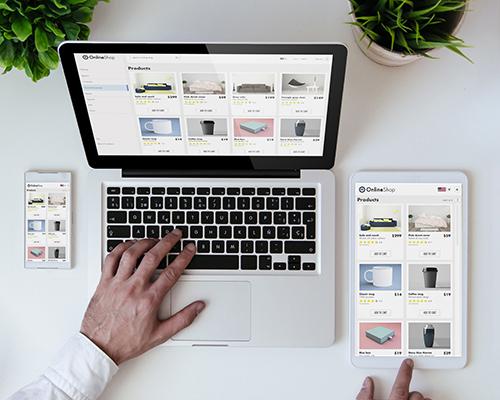4 Retail Marketing Strategies to Adopt During COVID-19
The sudden shutdown of brick and mortar and uncertainty in consumer spending leaves the retail industry trying to figure out how to best drive business forward.
In a recent webinar, we polled enterprise retail marketers on what they anticipate to be the biggest challenge post-pandemic: 54% were most concerned with in-store sales loss, followed by inventory management (15%) and staffing/re-opening their stores (15%). New customer acquisition and online customer retention were also concerns.
While there isn’t a crystal ball to see how the industry will be fully impacted in the near or distant future, there are certain strategies retailers can employ now to successfully pivot their marketing to ecommerce-only, keep customer experiences as convenient as possible, and increase retention and loyalty long after this all settles.
1. Make visitor identification & identity resolution a priority
As frequent in-store shoppers and both new and returning visitors are headed online, many retailers are seeing a spike in web sessions. To help recover any lost in-store revenue, it’s imperative to be able to identify as many visitors as possible during this time period.
This means identifying those who haven’t yet logged in or created an account, as well as those who have clicked through an email and haven’t entered their email address anywhere else on your site.
Having a solution in place that can accurately identify each visitor, even anonymous ones, and resolve their behavior into a single customer profile is key to ensuring you can engage with each customer in the right way and personalize to them appropriately.
This will also help you down the road in better understanding how their behavior is changing and will change as the crisis continues.
2. Use offline data to continue to engage previous in-store shoppers
As noted above, the majority of retail marketers are most concerned with the impact COVID-19 has on in-store sales. If you haven’t already, be sure to leverage your in-store customer data in your online marketing campaigns to specifically communicate with those who have been affected by store closings.
Introduce these customers to the convenience of your online experience and loyalty benefits, and educate them on the perks of connecting with you digitally.
By combining offline with the rest of your cross-channel data, you can then cross-sell and recommend items to your brick and mortar customers via your website, email, app or even mobile push that are similar to or complement their in-store purchases.
Retailers can also engage in-store shoppers during this time by reminding these customers that the consumable products and perennial favorites they’ve previously bought in person can easily be repurchased or refilled online.
3. Combat inventory issues with triggered product alerts
Many retailers are facing inventory struggles of all kinds right now — from excess products to not enough. Whether you’re trying to keep up with product demand, push seasonal items, and/or keep high-margin products top of mind, triggered alerts are a simple yet highly effective way to notify customers in real time about the products they most care about.
Product alerts marry real-time product catalog changes and automate price drop, low inventory, and back in stock messages to those who interacted with specific items — based on their viewed, carted, purchased or wish list activity.
To be most effective in driving conversion, these communications should feature the previously engaged product for convenience, as well as recommendations similar to the item or similar to the behavior of other customers who purchased that item.
4. Personalize blast sends to avoid unsubscribes & drive conversion
Out of fear of uncertainty, many retailers are reverting back to blasting their customers with generic messages and deep discounts (comparable to Cyber Monday) to drive sales. But this is just contributing to white noise in your customers’ inbox and could lead to heavy unsubscribes. Personalization is key right now, even for your mass sends.
Target deep discounts and sales to those most likely to buy based on past interest to keep inboxes uncluttered, and incorporate in-email personalized modules to keep blasts highly relevant to a customer’s current activity.
Modules and content blocks allow you to personalize by loyalty status and include exclusive offers, and highlight certain inventory, top sellers by category, browsed items, and product recommendations directly in the email without additional creative or production time.
Kara Holthaus is the vice president of client services at SmarterHQ. SmarterHQ is a personalization platform built on a CDP infrastructure that makes it easy for marketers to increase revenue now and customer relationships over time by powering highly relevant, cross-channel experiences. Trusted by leading brands such as Bloomingdale’s, Omni Hotels, Santander Bank, and Sam’s Club, SmarterHQ activates and unifies real-time multichannel data, identifies audiences quickly based on customer behavior and profile information, and automates personalized content across email, web, mobile push, print, and ad channels.


